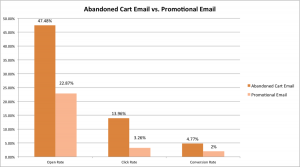The concept of parallel entrepreneurship is becoming more relevant, describing individuals who work on side projects — such as those working full-time but driving Uber or doing other work in their spare time. This type of entrepreneurship is also becoming more prominent as the cost of living has increased. Many individuals need a second source of income. A recent census found that an estimated thirteen million American workers have more than one job. In one study, 57% of those surveyed indicated participating in the gig economy to earn more money or supplement their income. The rising trend of running more than one business or working on multiple projects is also generational — the majority powering this field is 18–35 years of age. In fact, more than any other generation, 47% of Millennials freelance.
Operating various businesses, at different stages, and often running them concurrently is not without risk to the entrepreneur. This is parallel entrepreneurship in the present, and the circumstances they are facing:
Growth of Parallel Entrepreneurship
The barriers to becoming an entrepreneur have been lowered by the evolution of the technology — it’s easier than ever to take an idea to consumers quickly. Traditionally, entrepreneurs would be the drivers of a singular business, but with recent developments, it’s possible for entrepreneurs to divide their time and effort between multiple projects. The key for this model is that business concepts are easy to come up with and that these concepts often have similar goals, set up processes and share other core startup principles.
Running consequent businesses with the parallel approach can bring advantages if the entrepreneur has the resources and ability to bring both businesses to fruition. The total number of Americans working in multiple jobs is difficult to pinpoint due to unmeasured statistics and hidden figures.
Who are Parallel Entrepreneurs?
Individuals who work on multiple ventures at once are often misconstrued to be seasonal employees, working extra jobs at times when demand for workers is higher. However, recent census findings have indicated that most multi-job holders kept their positions for a time period of a year or more.
Parallel entrepreneurs could also include individuals working full time, but with other side projects like paid writing, Fiverr-style tasks and even smaller ventures like cake making on weekends. This can be attributed to the lower average pay gains earned by the individual compared to the rising cost of living. Often employers are asking for more hours without increasing pay, driving many to be reliant on multiple jobs just to make due. Economists have also highlighted other characteristics for gigging ventures, eager young entrepreneurs keen to do more or seeking variety by working more than one job.
Parallel Entrepreneurship In Tech
What you can learn from one venture can often be applied elsewhere. This means that “parallel” second businesses often benefit from the maturity and experience of the entrepreneur. In tech, some startup founders may even use one venture to seed another.
According to research reported by CrunchBase, successful US-based startups raised $ 41 million and exited with $ 242 million on average, but only one out of every nine startups is successful. That means the entrepreneur’s best chance for success may be in launching multiple ventures, rather than putting all their eggs into one basket by focusing on a single startup.
Multi-Venture Risks
For the average founder, it can be difficult and ineffective to run multiple early-stage ventures at once. It is important for these individuals to establish steady and reliable income while they explore new opportunities. Parallel entrepreneurship is often the result of winding down one business (sale of the company, shutting down a failed business, new management) while still being in the startup process for another — but this consumes a lot of resources and energy.
A question entrepreneurs should answer for themselves is whether the two ventures bring value to each other, or are completely independent of each other. While there will always be difficulties in launching a new business and especially two, the best chance of success lies in exploring as many avenues of potential profit as possible.
Parallel entrepreneurs today can be found on driving cars, working online and building multiple business ventures or launching their own. These people are not only working extra seasonal jobs but are building multiple parallel careers in an attempt to cope with the higher cost of living or to achieve the dream of financial independence.
This article originally appeared on the author’s blog and was reprinted with permission.
Business & Finance Articles on Business 2 Community
(27)






